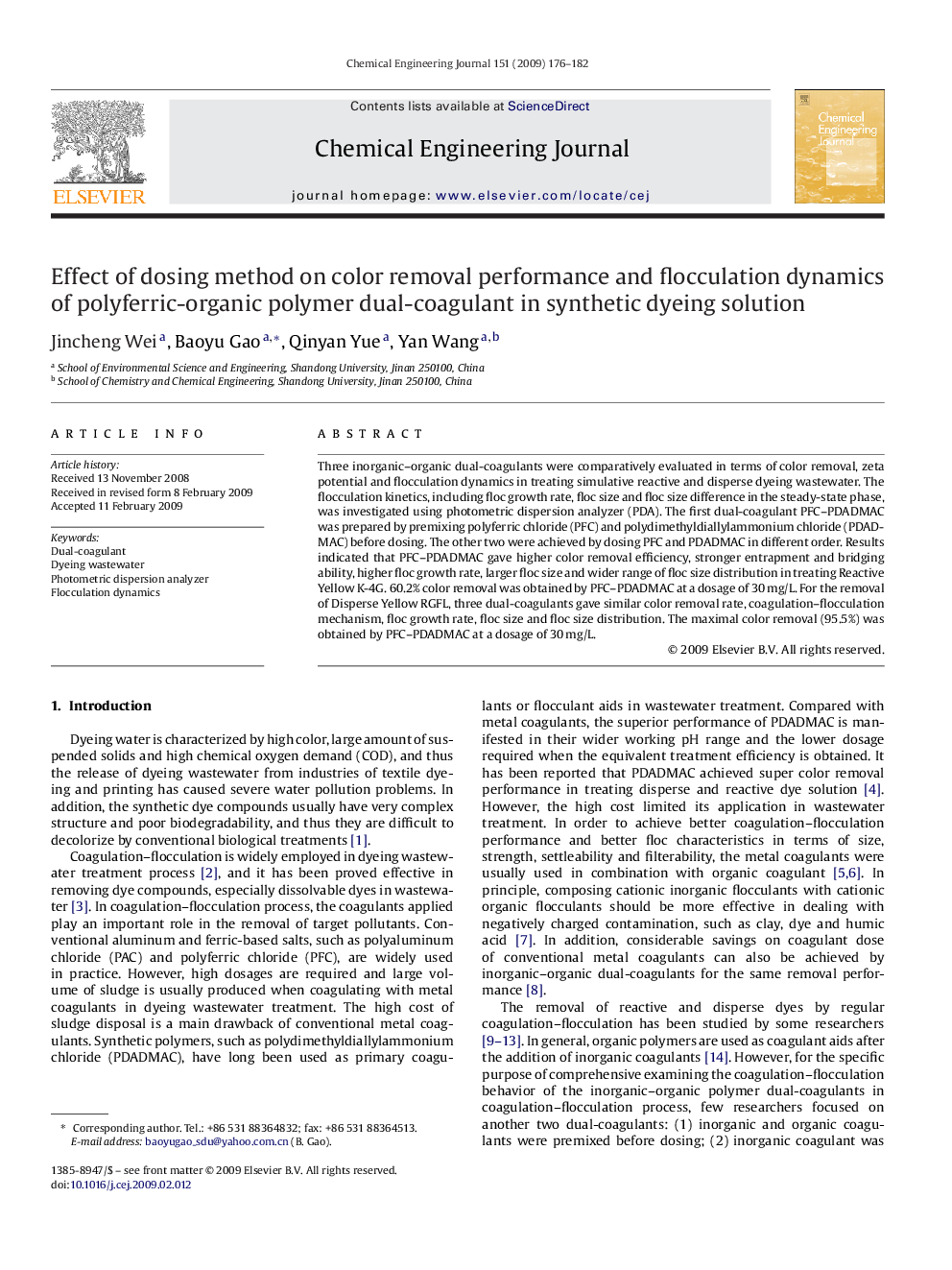| Article ID | Journal | Published Year | Pages | File Type |
|---|---|---|---|---|
| 152368 | Chemical Engineering Journal | 2009 | 7 Pages |
Three inorganic–organic dual-coagulants were comparatively evaluated in terms of color removal, zeta potential and flocculation dynamics in treating simulative reactive and disperse dyeing wastewater. The flocculation kinetics, including floc growth rate, floc size and floc size difference in the steady-state phase, was investigated using photometric dispersion analyzer (PDA). The first dual-coagulant PFC–PDADMAC was prepared by premixing polyferric chloride (PFC) and polydimethyldiallylammonium chloride (PDADMAC) before dosing. The other two were achieved by dosing PFC and PDADMAC in different order. Results indicated that PFC–PDADMAC gave higher color removal efficiency, stronger entrapment and bridging ability, higher floc growth rate, larger floc size and wider range of floc size distribution in treating Reactive Yellow K-4G. 60.2% color removal was obtained by PFC–PDADMAC at a dosage of 30 mg/L. For the removal of Disperse Yellow RGFL, three dual-coagulants gave similar color removal rate, coagulation–flocculation mechanism, floc growth rate, floc size and floc size distribution. The maximal color removal (95.5%) was obtained by PFC–PDADMAC at a dosage of 30 mg/L.
